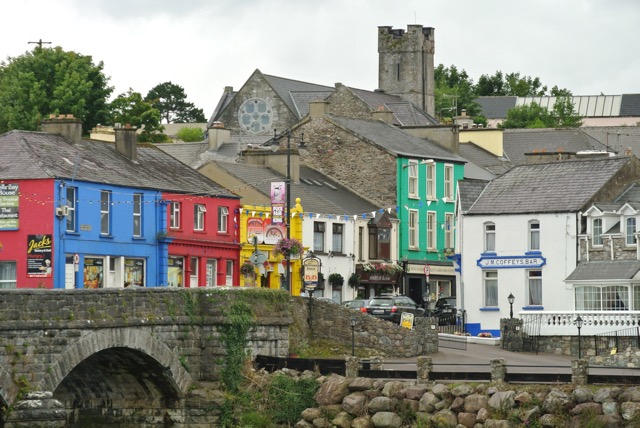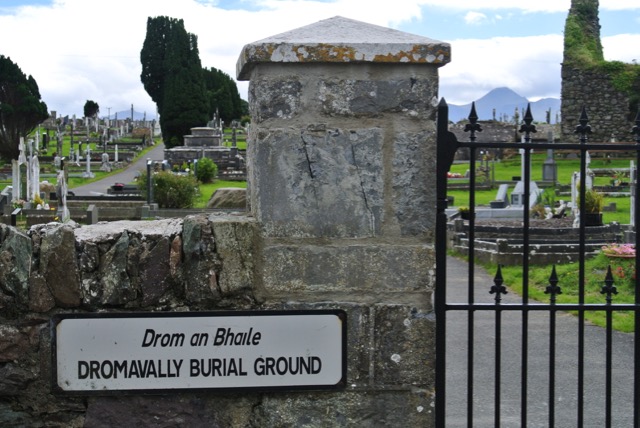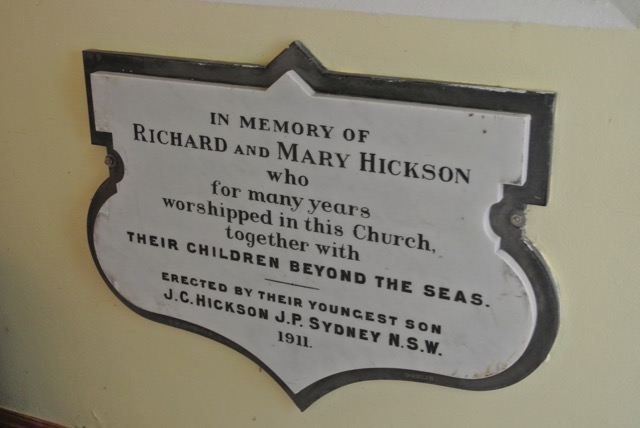
John Hickson and his twenty year old daughter Alice visited Killorglin in 1893 on their world trip. John wrote in his account of that journey:
The old town that in early days to my youthful imagination seemed a city, remains with little alteration, its fairs and markets and annual festival of Puck Fair still exists to mark its ancient customs, but many of the places and things most sacred in my memory were gone, and connecting them with those that were passed away, I felt the want and sighed for “the touch of a vanished hand, the sound of a voice that is still.” (Hickson J, Notes of Travel p.38)
It is hard to go back to places where we have lived before, and there is a note of sadness in John’s writing. The remembered joys of life cannot be relived, though they are remembered with longing. John left Kerry as a 22 year old in 1870 and came back 23 years later. He lived those years on the far side of the world, in the vibrant antipodean city of Sydney, making his fortune as a timber merchant. By the time he returned to Kerry in his mid forties he was successful and wealthy, the father of ten children, the eldest of which had come with him to see where her father had been born.
In his book John quotes a poem that he had written in 1868, when he was twenty, and in which he looks back on his school days with fondness. Here are two stanzas which give a glimpse into school life in rural Ireland in the 1850s.
When to school we with our brothers o’er the bridge we’d briskly walk
Some new play, or sport, or pleasure, was the subject of out talk
With our books in strap or satchel, on our shoulders loosely swung
Then e’re school commenced its duties, some nice hymn was sweetly sung.Ah! the dear old thatch roofed schoolhouse, with its turf fire and clay floor,
And its plain deal desks and benches, and the wainscot near the door;
Its neat maps and pictures hanging on the smooth and white washed wall,-
Neath its shelter we were gathered, many a day when we were small.
The poem goes on to describe their games and pastimes, catching fish in the River Laune, swimming in some of the quiet pools, and the whole thing is laced with nostalgic longing for childhood.

The town had changed since John had left it 23 years earlier. He writes of Killorglin as his “native place,” where “I spent my happy boyhood days.” He says:
This town in the old days was a quiet, unfrequented spot; but now the march of progress has extended railway communication to it. We accordingly went by rail to Killorglin to note the changes produced in thirty years. (Notes of Travel p.37)
Thirty years before the time that he penned these words, John Hickson was 15 years old. He mentions elsewhere in his book that he lived in Sneem during his childhood. I have wondered if he actually lived in Sneem before he started school, between 1848 and 1853, or after he finished school, around 1863. Either is possible, but the former seems more likely since John’s older brother William married a girl from near Sneem in 1858, and presumably they had met in Sneem rather than Killorglin, although I cannot be sure.
In August this year, my nineteen year old daughter and I passed through Killorglin on a visit to Kerry, much as John and his daughter did over 120 years ago. The “march of progress” which meant that John and Alice could travel there by rail, ironically resulted in the closure of the railway nearly sixty years ago (opened 1885, closed 1960). We arrived neither by horse and buggy nor by rail, but by car.
The famous tourist route known as the Ring of Kerry, said to be one of Ireland’s most beautiful drives, passes through Killorglin, so the bridge over the Laune and the town centre are choked with traffic. We saw signs of the Puck Fair, that had been held the week prior to our visit. We crossed, on a stone bridge, the wide, fast flowing waters of the Laune. We visited the graveyard where John Hickson’s mother and several of his siblings, as well as his best friend, are said to be buried, though we could not find any trace of their graves. But we didn’t see his old schoolhouse with thatched roof and clay floor, since it is likely long gone.

There is an old Church of Ireland in the centre of the town, which like so many Protestant churches in Kerry, has been closed a good many years. It is now a tapas restaurant. It was the family church of the Hicksons during John’s childhood. I was keen to look inside because I had read that there is a plaque on one wall donated by John in 1911, on a later visit to his hometown. Waiting till the restaurant’s opening time I entered the beautifully renovated church interior, with its well stocked wine bar on one side of the old nave. I explained my purpose to the man at the door and he fetched the owner, who explained that most of the wall plaques had been removed, but there was one he could show me that might fit the bill. We walked through the old church, now restaurant and out to a back entrance, and there was the plaque which John had had made over a hundred years ago, as a tribute to his parents, John and Mary Hickson.

One thought on “Killorglin – the Hickson’s Kerry home”